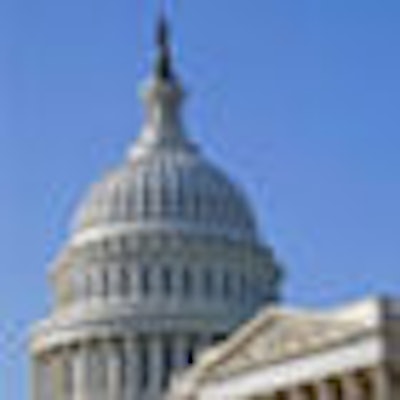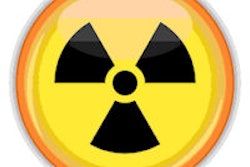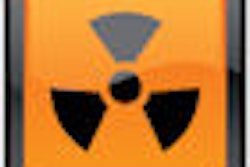
On Friday, February 26, the U.S. Congress held hearings to learn more about radiation dose exposure from radiology and radiation oncology procedures. In part 2 of our coverage, we describe the testimony provided by healthcare associations invited to the hearings.
Medical groups representing radiology and radiation oncology tackled head-on the issue of rising exposure to medical radiation in congressional hearings on February 26. Six professional healthcare associations representing radiologists, radiation oncologists, technologists, medical physicists, and equipment manufacturers were invited to present testimony to the U.S. House of Representatives subcommittee on health on February 26.
Subcommittee chairman Rep. Frank Pallone Jr. (D-NJ), colleagues, and staff seemed pleasantly surprised that all organizations recommended changes that would add strength and uniformity to best-practice radiology and radiation oncology guidelines.
American College of Radiology (ACR)
The ACR of Reston, VA, recommended expanding existing federally mandated medical imaging accreditation requirements to encompass all clinical settings including radiation therapy modalities. The ACR also advised creating a national CT dose index registry, as well as passing legislation requiring minimum standards for radiology and radiation therapy technologists.
ACR board of chancellors member and former ACR chair Dr. E. Stephen Amis Jr. told the subcommittee that the associations representing radiology and radiation therapy would offer the best way to oversee and manage accreditation and other recommended initiatives because they have the hands-on professional expertise required. He reminded subcommittee members that beginning in 1987, the ACR initiated the first-ever voluntary accreditation programs. One of these, for mammography, led to the passage of the Mammography Quality Standards Act (MQSA) in 1992, and the ACR is the only national organization approved by the U.S. Food and Drug Administration (FDA) to oversee it.
While the ACR has been working with modality manufacturers to develop a CT dose index registry, Amis said that a congressional mandate requiring one would aid the process. He noted that not only would a national mandatory registry measure ongoing performance for accreditation of facilities performing CT exams, it might more rapidly help identify problems with equipment or inappropriate use.
American Society for Radiation Oncology (ASTRO)
Dr. Tim R. Williams, chairman of the board of directors of ASTRO of Fairfax, VA, advised the subcommittee of the association's ongoing patient safety and quality assurance projects, and the society's development of a six-point action plan to improve quality and reduce errors.
The plan includes creating a national database for reporting linear accelerator errors, enhancing the currently voluntary radiation oncology practice accreditation program, and expanding training programs. Williams also called for accelerating ASTRO's Integrating the Healthcare Enterprise - Radiation Oncology (IHE-RO) initiative to facilitate the seamless transfer of radiotherapy treatment information to electronic medical records and related databases, as well as the immediate passage of legislation to enforce patient safety regulation.
In late 2008, ASTRO and the ACR initiated a program offering radiation oncology practice accreditation. However, as pointed out by Amis, fewer than 10% of U.S. radiation therapy practices have taken advantage of it. ASTRO recommends that all radiation oncology practices undergo accreditation.
Williams told Congress that from ASTRO's perspective, it needs to provide increased funding for the National Cancer Institute (NCI) and for one of its branches, the Radiological Physics Center (RPC) at the M. D. Anderson Cancer Center at the University of Texas in Houston.
Pointing out that federal funding for the center, which obtains two-thirds of its operating budget from the NCI, has decreased steadily over the past 10 years, Williams said that ASTRO "believes that RPC's auditing and monitoring tools have led to improved dosimetry, and identified the fact that approximately 30% of the hospitals applying to participate in radiation oncology clinical trials failed to accurately irradiate head and neck phantoms."
ASTRO has incorporated information and tools from the RPC to develop enhanced quality assurance programs to educate its membership of more than 10,000 medical professionals affiliated with radiation oncology. Williams strongly recommended that a budget increase for RPC would be a prudent investment for Congress to make with respect to its overall objective to increase patient safety.
ASTRO also recommended board certification of medical physicists, as well as mandatory and standardized licensing requirements for them throughout the U.S.
American Society of Radiologic Technologists (ASRT)
A major theme at the hearing was developing ways to ensure that competent medical staff members are operating the increasingly sophisticated equipment used at radiology and radiation therapy facilities. The ASRT lobbied passing the Consistency, Accuracy, Responsibility, and Excellence in Medical Imaging and Radiation Therapy (CARE) Act, which would require minimum educational and credentialing standards for technical staff.
The most recent iteration of the CARE Act is working its way through the House of Representatives as HR 3652. It was introduced in September 2009 by Rep. John Barrow (D-GA), also a member of the subcommittee on health.
"Cancer patients should not have to wonder whether the person performing their CT scan or planning their radiation therapy treatment is competent," said Sandra Hayden, a member of ASRT's board of directors. She pointed out to incredulous congressional delegates and House staff that radiologic technologists are not licensed or regulated in eight states, radiation therapists are not regulated in 17 states, 31 states do not oversee medical physicists, and no state licenses medical dosimetrists.
"Even in states with some type of regulation, the rules are sometimes so weak that they offer patients little protection," Hayden emphasized. "In some states hairdressers are better regulated than people who perform medical radiation procedures."
Hayden also lambasted the current status of reporting radiation-associated adverse events. "State and federal oversight ... is uncoordinated and inconsistent," she said. The ASRT calls for establishing consistent and mandatory public methods of reporting errors, and for establishing a consistent system of data collection and tracking.
American Association of Physicists in Medicine (AAPM)
Association president Michael Herman, Ph.D., told Congress that only AAPM seems to have a clear definition of a qualified medical physicist, pointing out that there is no consistent national recognition of this medical credential.
Herman bluntly stated that "medical physicists are licensed in only four states. There are no consistent national staffing guidelines for medical physics services, nor are there consistent standards for accrediting medical centers that use the services of medical physicists."
The AAPM recommended that this change immediately, through the passage of the CARE Act and with congressional support of the AAPM 2012/2014 initiative, which would require completion of an accredited clinical residency. The society also called for passing an examination to become certified by the American Board of Radiology. Federal funding of residency programs would help meet the demand for board-certified medical physicists, and this is needed now, Herman said.
The AAPM also advocated legislation establishing rigorous minimum standards for accrediting clinical practices, linking U.S. Centers for Medicare and Medicaid Services (CMS) reimbursement to these rigorous practice accreditation standards, and establishing a centralized national data collection system.
The use of both mandatory public reporting and anonymous reports of radiation therapy "near misses" would be beneficial, because in that manner trends of weaknesses and problems could be more easily identified. During a question-and-answer session, Herman pointed out that near-miss analysis is one of the most valuable tools to improve quality assurance programs.
Medical Imaging and Technology Alliance (MITA)
Executive director David Fisher testified for MITA, an association representing more than 50 companies whose products comprise more than 90% of the radiology and radiation therapy market. MITA is a division of the National Electrical Manufacturers Association of Rosslyn, VA, and created headlines the day before the hearings with the announcement of a CT radiation dose safeguard program.
MITA recommended the development of radiation dose reference levels. Fisher pointed out that once these are established, they could serve as data points at which physicians, medical physicists, and technologists could compare the dose level of a specific procedure they are administering to a wide sample of similar tests.
The industry association also voiced its support for the recommendations of the professional associations invited to present testimony at the health subcommittee hearings.
By Cynthia E. Keen
AuntMinnie.com staff writer
March 1, 2010
Related Reading
Congress surprised at lack of medical radiation oversight, February 26, 2010
MITA unveils radiation dose warning system for CT, February 25, 2010
FDA launches initiative to rein in medical radiation, February 9, 2010
ASTRO commits to patient protection plan, February 4, 2010
Copyright © 2010 AuntMinnie.com



















